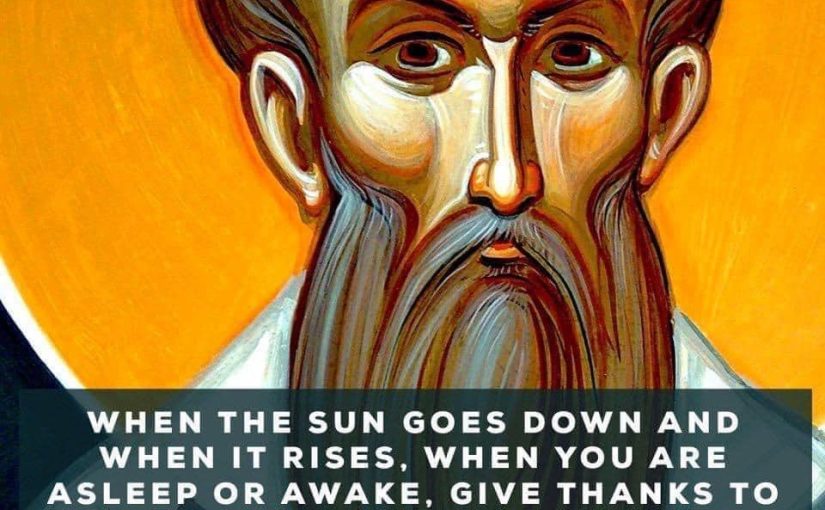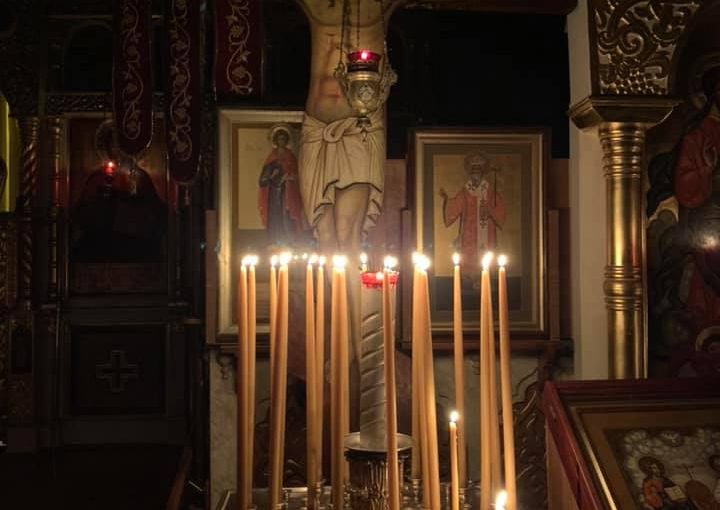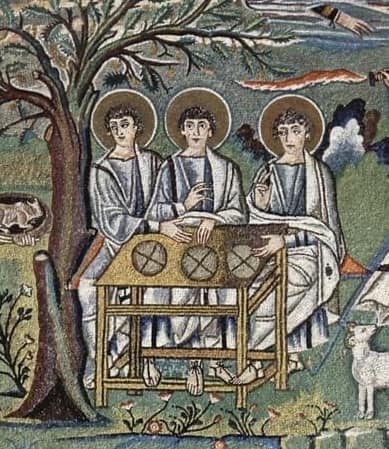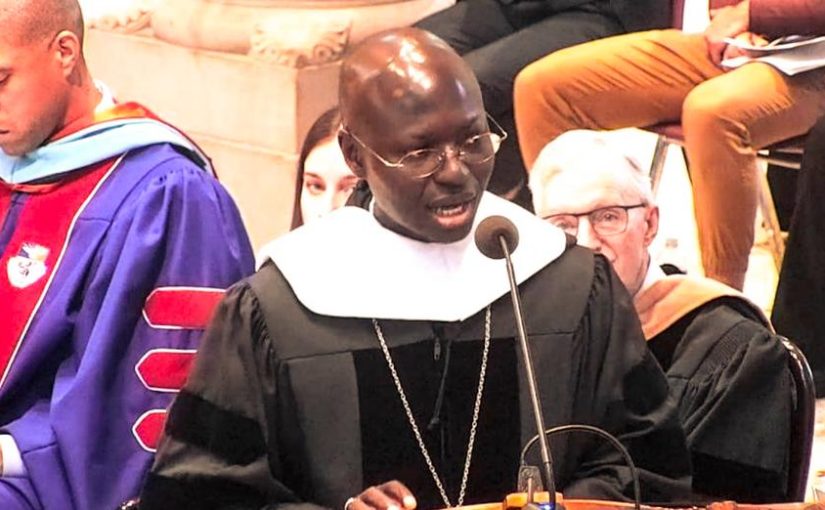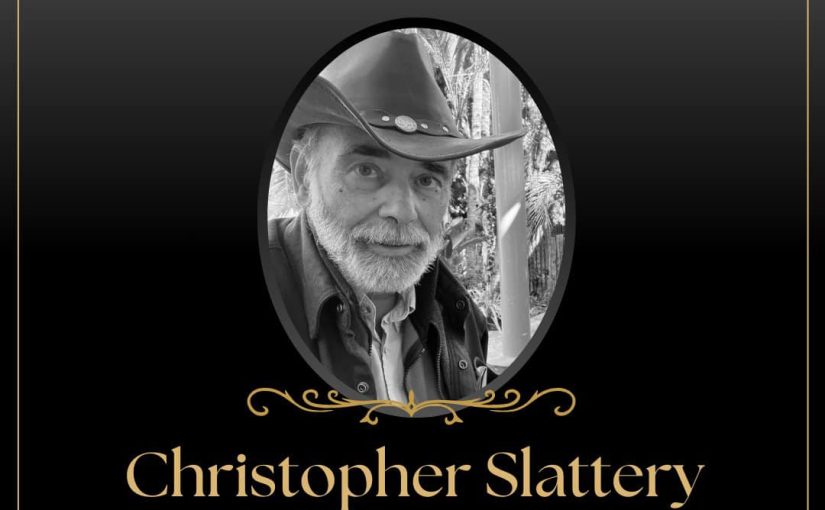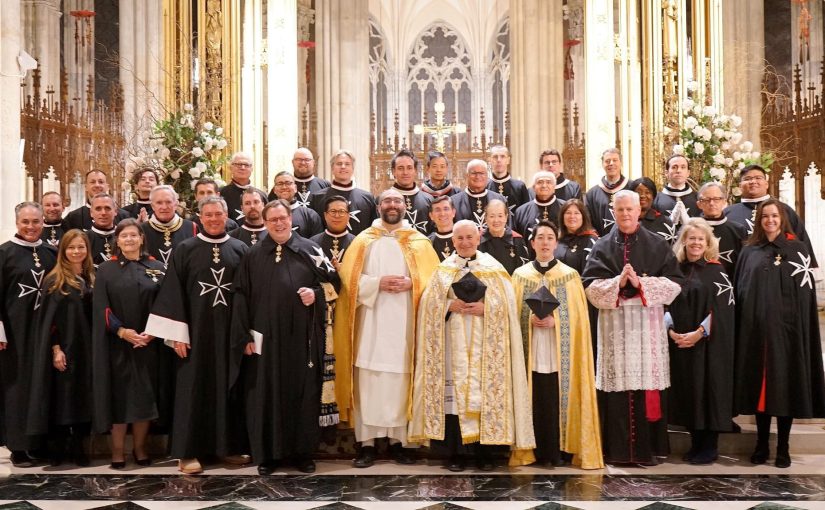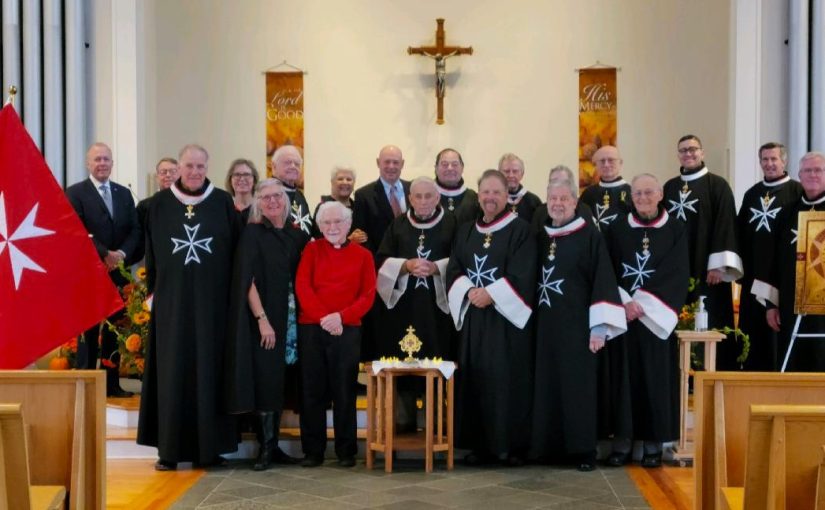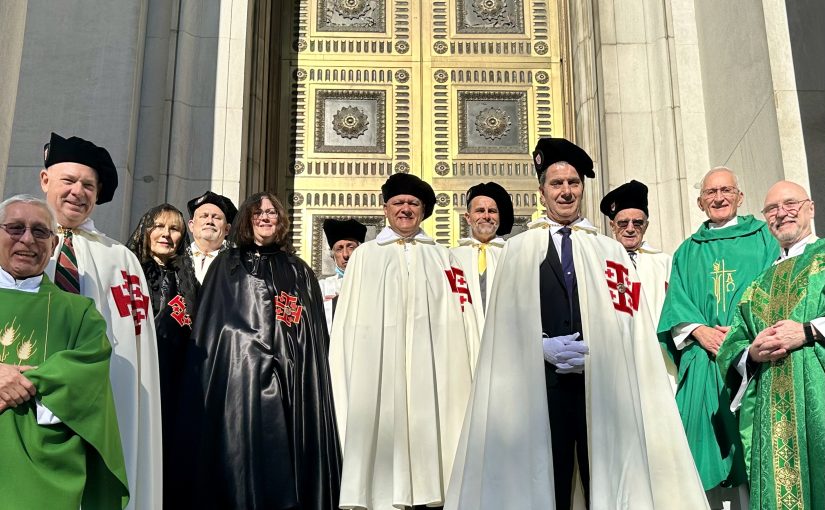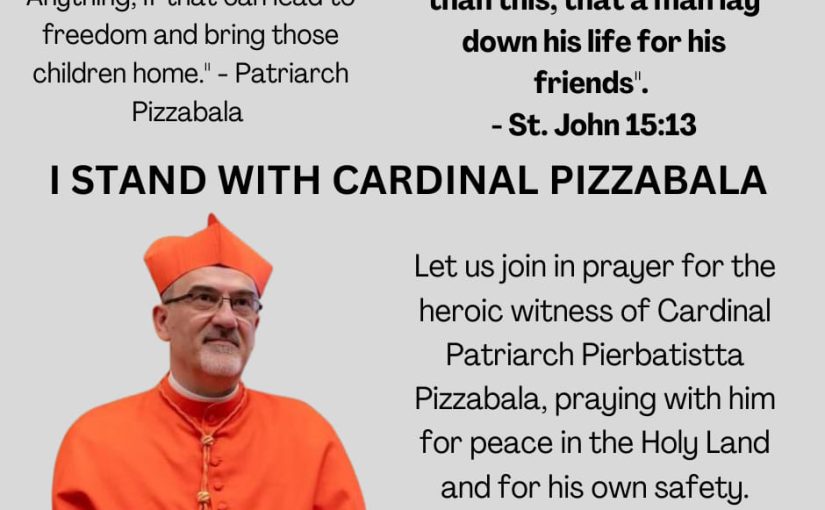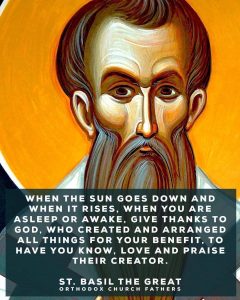 Thanksgiving to God is daily, both during the eucharistic celebration in the Church and in the sacrifice of love we offer upon the altar of every human heart, in every human temple. In fact, the Fathers unanimously say that it is the remedy that reverses the trajectory of loss because it reorients us to the norm of our human existence. (SM)
Thanksgiving to God is daily, both during the eucharistic celebration in the Church and in the sacrifice of love we offer upon the altar of every human heart, in every human temple. In fact, the Fathers unanimously say that it is the remedy that reverses the trajectory of loss because it reorients us to the norm of our human existence. (SM)
Author: Paul Zalonski
Marvel at God’s compassion
This morning I came across a quote taken from the works of St. Peter of Damaskos (a 12th century) that I think begins to open a new window for our spiritual life. I think the mature Christian is a person who understands that the life of grace is a continuum: sometimes we live fully in the illumination of God’s life generating a virtuous life. Other periods of life we may struggle with a particular way of thinking and acting. I will say we can’t cave to thinking that we are hypocrites if we work on conforming our lives to the love, compassion and wonder of God’s Way. True conversion is neither THAT immediate nor lasting. To me, those who claim otherwise are fooling themselves and shallow and their spiritual advice not worth the paper it is written upon. The spiritual life takes time and it’s a deliberate work that is very tough-going and heart-wrenching. Whether the spiritual work is fully engaging in what is said in Matthew 25, or believing that Jesus of Nazareth is the Bread of Life, or to love our enemies, not stealing, murdering, or breaking (bending, stretching?) one’s promises and vows of poverty, chastity and obedience. We can’t reduce or empty the real questions which make life meaningful. Any reduction of the heart’s needs is too severe and unreasonable and therefore not of God.
The spiritual life is proposed to be an ascesis (an intentional work of the mind, heart & body). It is not always self-evident nor is it fully realizable without real, lively attention to grace. The fruit of grace is an openness and freedom to be the self. As one person taught, we are a mystery, and this constitutes this very self. What is veiled and unveiled takes intellectual, spiritual and affective maturity. And from my experience not too many of us have the required maturity. A periodic author that I have consulted has said, “It does not merely aim at the satisfaction of human understanding, it must “deepen” it. Thus, to replace the word “mystery” with the word ‘Father’ in relation to God renders an extremely comprehensible term which at the same time identifies God’s uniqueness and intensifies the mystery. The religious sense prepares us for such a revelation but revelation intensifies the depth of this religious sense” (A. Spencer).
In the end, we have to rely not on the negative to define who we are, and what we want to become. We are more than our “sin.” It is not the negative that will make us free in Christ. It may take to the end of our life to truly be what we are made to be. What we want may be illusive if we don’t do the work of conversion. We are more than our sin, we are more than the pathologies and our ideas that live rent free in our heads. Why is it that we allow toxicity to reign in the heart that tend to become unhealthy? I can say that I have personally struggled for years with defining myself and others by their actions without looking honestly at personal history and reality and the true desires of the human heart.
All this brings me to think about what it means to be in-relation to another person in a deeper way even if it breaks the convention, and challenges what has been proposed as the door to be a true son or daughter of the Lord of Life. I’m thinking of what it may mean to deal with humanity sexuality between consenting adults. I wouldn’t want to get into details here since that would be indiscrete. But I know first hand how certain religious superiors have not assisted the brethren well in dealing with matters of sexuality in a way that leads to greater freedom. In fact, the religious superiors have too readily adopted the world’s standards, in either a permissive way or in a way that does not allow for redemption. As Cardinal George said, our society now permits everything but forgives nothing.
All too often sexuality is feared and reduced to bromides. Human sexuality is supposed to be life-giving, generative, and beautiful. But it doesn’t have to be that way if we consider the perspective and way of proceeding of Eastern Christianity.
St. Peter of Damaskos writes:
Even if you are not what you should be, you should not despair. It is bad enough that you have sinned; why in addition do you wrong God by regarding him in your ignorance as powerless? Is he, who for your sake created the great universe that you behold, incapable of saving your soul? And if you say that this fact, as well as his incarnation, only makes your condemnation worse, then repent; and he will receive your repentance, as he accepted that of the prodigal son (Luke 15:20) and the prostitute (Luke 7:37-50). But if repentance is too much for you, and you sin out of habit even when you do not want to, show humility like the publican (Luke 18:13): this is enough to ensure your salvation. For he who sins without repenting, yet does not despair, must of necessity regard himself as the lowest of creatures, and will not dare to judge or censure anyone. Rather, he will marvel at God’s compassion.
As Christians we seek the hundredfold: our true happiness in this world, and our true happiness in the next (Mark 19:29). We live and act for the sake of Jesus and are promised one hundred times to inherit everlasting life and to be happy in this life. We forget that Jesus wants and begs for our happiness in this life!!!! Why is it that we forget this point in biblical revelation? How we get there takes time, love (concern for another’s well-being and destiny), and prudence. I can’t fall off the ground. So far my relationships are electric on a certain level. I am aware of my sinfulness and know my need for happiness and for redemption. Jesus tells us so. Amen.
A true Thanksgiving
The worship of the Catholic Church offers a reminder that every celebration of the Eucharist is, by definition, Thanksgiving. Our proper orientation is that of gratitude for being given life, freedom, love, virtue and friendship.
It is proper and right to hymn You,
to bless You,
to praise You,
to give thanks to You,
and to worship You
in every place of Your dominion.
For You, O God, are ineffable,
inconceivable, invisible, incomprehensible,
existing forever, forever the same,
You and Your only-begotten Son and Your Holy Spirit.
You brought us out of nothing into being,
and when we had fallen away,
You raised us up again.
You left nothing undone
until You had led us up to heaven
and granted us Your Kingdom, which is to come.
For all these things,
we thank You and Your only-begotten Son and Your Holy Spirit:
for all things we know and do not know,
for blessings manifest and hidden
that have been bestowed on us.
We thank You also for this Liturgy,
which You have deigned to receive from our hands,
even though thousands of archangels
and tens of thousands of angels stand around You,
the Cherubim and Seraphim, six-winged, many-eyed,
soaring aloft upon their wings,
singing the triumphal hymn,
exclaiming, proclaiming, and saying,
Holy, holy, holy, Lord Sabaoth,
heaven and earth are filled with Your glory.
Hosanna in the highest.
Blessed is He Who comes in the name of the Lord.
Hosanna in the highest
-from the anaphora (offertory prayer) of the Divine Liturgy of Saint John Chrysostom
Image: The Hospitality of Abraham (mid-6th century mosaic, detail), Basilica of San Vitale, Ravenna, Italy
Olivier-Marie Sarr awarded doctorate honoris causa
A doctorate of honoris causa bestowed on Abbot Olivier-Marie, O.S.B.
On November 16, 2023 in celebration of the Founders’ Day Convocation, Saint Vincent College (Latrobe, PA) awarded Dr. Olivier-Marie Sarr, O.S.B., Abbot of the Abbey of Keur Moussa (Senegal) the degree of Honorary Doctor in Humane Letters.
Read all about it here.
Having known about Father Olivier-Marie for a while, I recently met him at the abbatial blessing of the newly elected abbess of the Westfield Abbey (Vermont). He is a terrific person. Pray for his ministry in Senegal and Rome, and his Benedictine community.
Chris Slattery finishes his work here
Here’s John Burger’s tribute to Chris Slattery.
All Saints of the Order of Malta
We gathered earlier this evening at the Cathedral of Saint Patrick (NYC) for Solemn Vespers for the feast of All Saints of the Order of Malta. The feast day is actually on November 19 but since the 19th was a Sunday this year, the observance was transferred to Monday. We also had the privilege of venerating the relic of the founder of the Order of Malta, Blessed Gerard.
May the saints and blesseds of the Order of Malta intercede for us before the Throne of Grace.
Order of Malta Eastern CT observe November devotions
The month of November brings us to devote time in prayer and community praying for the faithful departed, visiting the cemetery, offering Holy Mass, and remembering. In short, November is devoted to the souls in purgatory.
This prayer from the Byzantine Church speaks in complement to psalms 50 and 130 orients our hearts and minds:
By Thy resurrection from the dead, O Christ, death no longer hath dominion over those who die in holiness. So, we beseech Thee, give rest to Thy servants in Thy sanctuary and in Abraham’s bosom. Grant it to those, who from Adam until now have adored Thee with purity, to our fathers and brothers, to our kinsmen and friends, to all men who have lived by faith and passed on their road to Thee, by a thousand ways, and in all conditions, and make them worthy of the heavenly kingdom.
Today, the Order of Malta-Eastern CT Area gathered for Mass.
May the souls of the faith departed rest in peace.
Order of Holy Sepulchre meets in Waterbury
Today, members of Connecticut’s Order of the Holy Sepulchre of Jerusalem met at the historic Basilica of the Immaculate Conception (Waterbury, CT) for Sunday Mass and then for a festive dinner given by Msgr. John Bevins. It was a beautiful time to gather and share friendship. (more were able to make to dinner than to Mass due to other commitments.)
Our Lady of Palestine: Queen of the Land and of our hearts
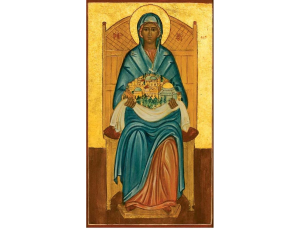 Today is a solemn feast for those of us who are members of the Order of the Holy Sepulchre of Jerusalem, and for the Latin Patriarchate of Jerusalem. Today is a perfect day to pray for peace in the Holy Land through Mary’s intercession. Prayers for the ministry of the Order of the Holy Sepulchre throughout the world.
Today is a solemn feast for those of us who are members of the Order of the Holy Sepulchre of Jerusalem, and for the Latin Patriarchate of Jerusalem. Today is a perfect day to pray for peace in the Holy Land through Mary’s intercession. Prayers for the ministry of the Order of the Holy Sepulchre throughout the world.
Because we follow the Lex Orandi tradition, the following prayer is the opening collect for the Mass.
Let us pray.
Heavenly Father,
we humbly ask you, through the
intercession of the Blessed Virgin Mary, Queen of Palestine, to help us overcome all the difficulties
which face us in this Holy Land,
the land which your Son has made Holy;
for it is in this land where our Savior took flesh
and brought the entire world to Redemption.
We beseech you Father,
strengthen us in faith, service, and perseverance so that we may be witnesses
to that unending act of love,
you who live and reign forever and ever.
A cardinal’s oblation
The red that a cardinal wears is supposed to point to a willingness to shed their blood. The ritual used to create new cardinals of the Roman Church refers to the wearing of the color red as a sign of the blood of the martyrs.
Pope Saint John Paul II taught; “Red is a sign of the dignity of the office of a cardinal, signifying that you are ready to act with fortitude, even to the point of spilling your blood for the increase of the Christian faith” (1998).
Cardinal Pizzaballa’s words of availability are impactful. Read the article.
St. Maximilian Kolbe, pray for us.
This deeply moves me.
